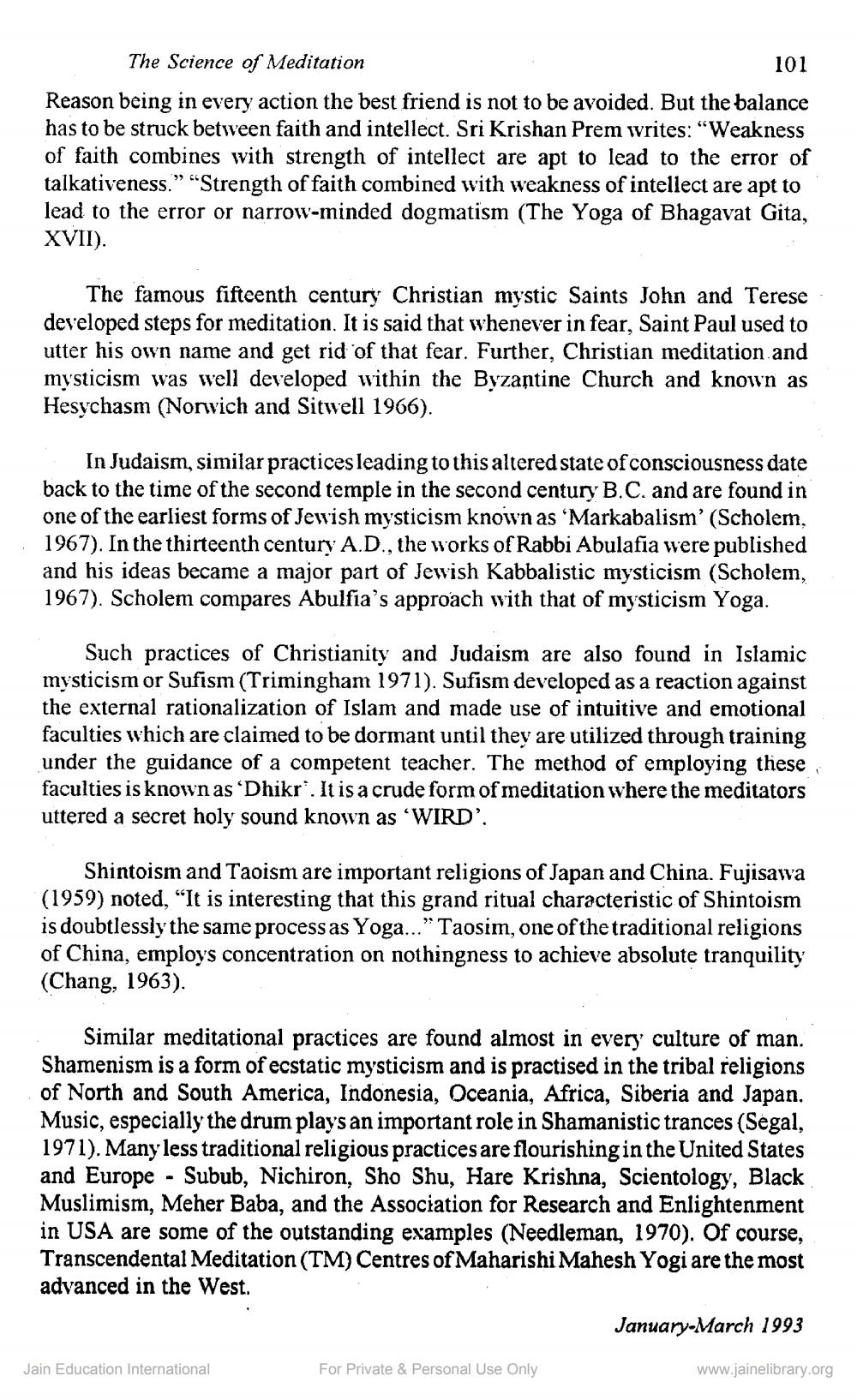________________
The Science of Meditation
101 Reason being in every action the best friend is not to be avoided. But the balance has to be struck between faith and intellect. Sri Krishan Prem writes: “Weakness of faith combines with strength of intellect are apt to lead to the error of
ss." "Strength of faith combined with weakness of intellect are apt to lead to the error or narrow-minded dogmatism (The Yoga of Bhagavat Gita, XVII).
The famous fifteenth century Christian mystic Saints John and Terese developed steps for meditation. It is said that whenever in fear, Saint Paul used to utter his own name and get rid of that fear. Further, Christian meditation and mysticism was well developed within the Byzantine Church and known as Hesychasm (Norvich and Sitwell 1966).
In Judaism, similar practices leading to this altered state of consciousness date back to the time of the second temple in the second century B.C. and are found in one of the earliest forms of Jewish mysticism known as 'Markabalism' (Scholem, 1967). In the thirteenth century A.D., the works of Rabbi Abulafia were published and his ideas became a major part of Jewish Kabbalistic mysticism (Scholem, 1967). Scholem compares Abulfia's approach with that of mysticism Yoga.
Such practices of Christianity and Judaism are also found in Islamic mysticism or Sufism (Trimingham 1971). Sufism developed as a reaction against the external rationalization of Islam and made use of intuitive and emotional faculties which are claimed to be dormant until they are utilized through training under the guidance of a competent teacher. The method of employing these faculties is known as “Dhikr`. It is a crude form of meditation where the meditators uttered a secret holy sound known as 'WIRD'.
Shintoism and Taoism are important religions of Japan and China. Fujisawa (1959) noted, “It is interesting that this grand ritual characteristic of Shintoism is doubtlessly the same process as Yoga..." Taosim, one of the traditional religions of China, employs concentration on nothingness to achieve absolute tranquility (Chang, 1963).
Similar meditational practices are found almost in every culture of man. Shamenism is a form of ecstatic mysticism and is practised in the tribal religions of North and South America, Indonesia, Oceania, Africa, Siberia and Japan. Music, especially the drum plays an important role in Shamanistic trances (Segal, 1971). Many less traditional religious practices are flourishing in the United States and Europe - Subub, Nichiron, Sho Shu, Hare Krishna, Scientology, Black Muslimism, Meher Baba, and the Association for Research and Enlightenment in USA are some of the outstanding examples (Needleman, 1970). Of course, Transcendental Meditation (TM) Centres of Maharishi Mahesh Yogi are the most advanced in the West.
January March 1993
Jain Education International
For Private & Personal Use Only
www.jainelibrary.org




